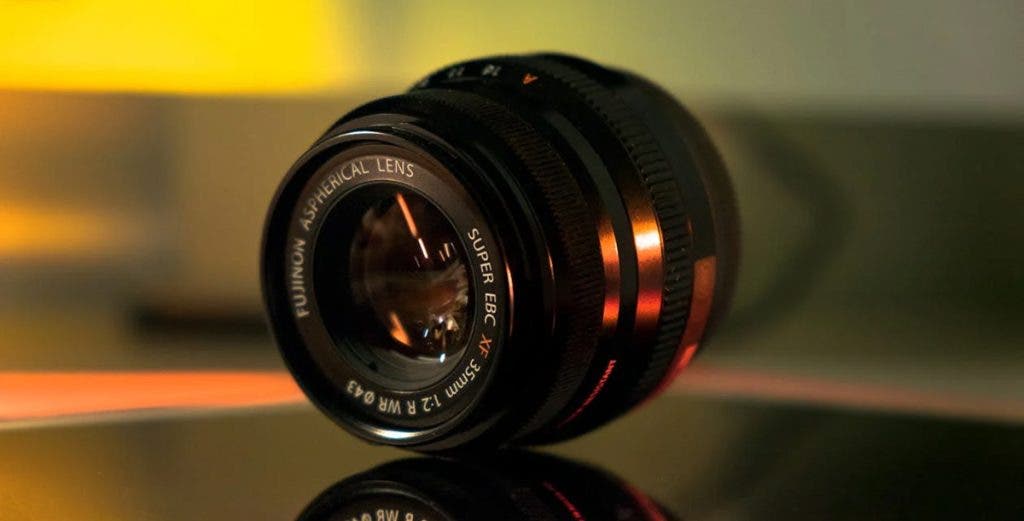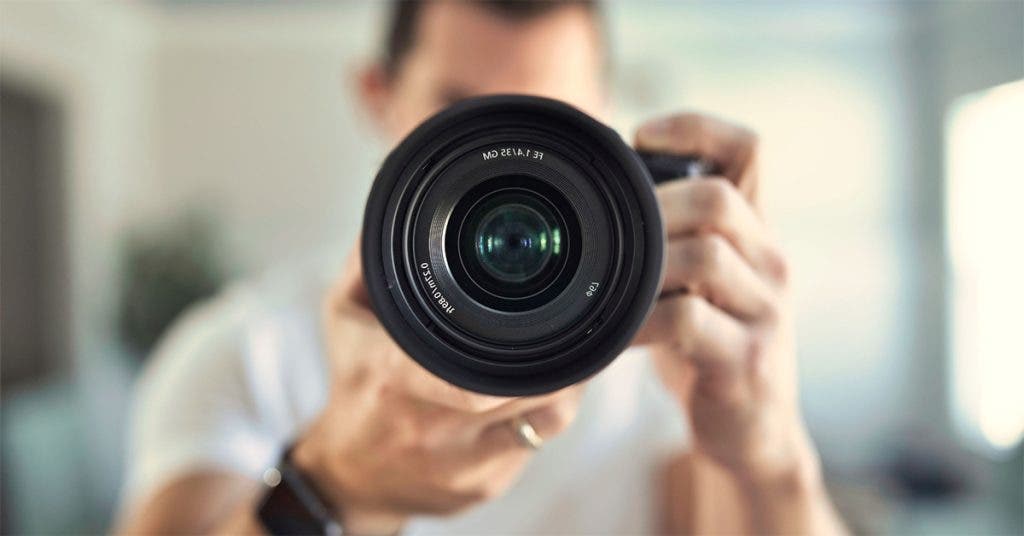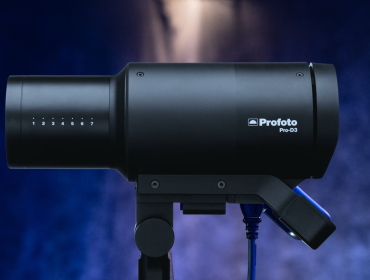Aspherical lenses have stayed on top of the game as a tool that both amateur and pro photographers use. Contrasting with traditional spherical lenses, aspherical lenses have a more complex surface profile – so, they protect your images from many optical aberrations that threaten to damage their quality. This means sharper images, better light transmission, and just a high-level performance overall.
Aspherical cameras are for almost everyone. So, even if you’re reading this because you’re into capturing eye-catching stills or shooting videos in crisp quality – you’re still in the right place. You should study this guide carefully, especially as we discuss the types of aspherical lenses along with their significance, applications, and advantages. Specifically, we will talk about mirrorless, rangefinder, digital cinema, SLR, and medium format cameras.
What are aspherical lenses?
The word “aspherical” hints that these lenses have a more complex shape, the farthest thing away from spherical. Specifically, the difference between spherical lenses vs. aspherical lenses goes like this: traditional spherical lenses have a very symmetric and uniform curve across their entire surface, while aspherical lenses feature a curvature that does not stay the same throughout the lens.
Such a design in the aspherical lenses allows for more aberration correction, which is typically more common in spherical lenses, often referred to as “spherical aberration.” Spherical aberration happens when light rays passing through the round lens’s edge focus at a different point rather than passing through the center of the lens.
Here’s a chart of the key differences between spherical lenses and aspherical lenses:
| Type of Lens | Spherical Lenses | Aspherical Lenses |
|---|---|---|
| Surface Curvature | Uniform, singular curvature | Irregular curvature |
| Image Quality | Prone to spherical aberrations and uncontrollable distortions | More complex and costs more to make due to the precision required to perfect its curvature |
| Complexity and Manufacturing | Easier and commonly cheaper to manufacture | More complex and cost more to make due to the precision required to perfect its curvature |
| Size and Weight | More complex and costs more to make due to the precision required to perfect its curvature | More compact and easier to carry by default, already protects itself from optical aberration by its form alone |

Mirrorless Aspherical Lenses
Panasonic Lumix S PRO 24-70mm f/2.8 Lens
Panasonic’s S PRO is a non-traditional lens that has a constant f/2.8 aperture. It’s designed to meet LEICA’s standards, it features advanced focus breathing suppression. You can take this lens anywhere the wind takes you – it is dust, splash, and freeze-resistant, after all. Its 82mm filter diameter and 11-blade circular diaphragm take a user’s imagination to new heights, making it an ideal lens for landscape photography, portrait photography, and street photography.
SIGMA 24-70mm f/2.8 DG DN Art Lens
This SIGMA 24-70mm lens is a zoom lens that has three aspherical lenses, which come together to deliver superior optical performance. With this DG DN Art lens, it’s more than possible – what with its six FLD and two SLD glass elements that attempt to erase any aberration from existence.
This lens is made for Sony E Mount and L Mount, so you don’t have to worry about it not fitting with your camera. Along with its compatibility with a wide range of cameras comes its key features: Eye-Detection Autofocus, dust and splash-proof body, and an AFL button on the lens barrel.
Rangefinder Lenses
THYPOCH Simera 28mm f/1.4 Lens
The THYPOCH Simera 28mm f/1.4 lenses are compatible with Z, E, X, and RF mounts, offering the widest range of compatibility among this list. This aspherical camera lens offers a wide f/1.4 aperture and a diaphragm with 14 blades, giving mesmerizing bokeh and amazing subject isolation.
You might notice that it has an ergonomic crescent-shaped focus tab, and this is a very important part of this type of aspherical lens – this highly improves the lens’s focusing capabilities. Additionally, this camera lens has click and de-click aperture modes that further enhance its versatility for all niches of photography.
THYPOCH Simera 50mm f/1.4 Lens
The THYPOCH Simera 50mm f/1.4 aspherical lenses caters to vintage lens lovers. In terms of usability, the lens is compatible with Z, E, X, and RF Mounts. It has a design that takes you back to the days of analog photography, with the modern infinity lock: a crescent-shaped focus tab and depth-of-field indicator. Users can also enjoy a clicked aperture ring and a modern de-clicked one as well.
This lens has 8 advanced elements, including a special aspherical element to correct distortions, extra-low dispersion glass to minimize color fringing, and high-refractive index elements for razor-sharp clarity. The wide aperture enhances low-light performance but also delivers dreamy, rounded bokeh. Finally, the lens has a superior light transmission of up to T1.5, so you already know every shot will be bright and vivid.
Leica 28mm f/2 Summicron-M 28 Lens
This Leica lens, the 28mm f/2 Summicron-M 28 lens, has a minimum focusing distance of 40 centimeters. It is a wide-angle aspherical camera lens, it’s a highly capable lens thanks to its dual-curve mechanism that is rarely seen elsewhere, crafted and planned carefully by Leica’s masterful engineers.
It’s a compact prime lens that boasts a focus ring that allows for easy and quiet adjustments across the entire range. Leica combines elegance and comfort in this lens, made possible by its refined optical tech, nine lenses in six groups, and an integrated round hood.
Digital Cinema Lenses
Sony’s Super 35mm Power Zoom Lens
This aspherical power zoom lens is less compact than the others, but luckily, Sony makes the size worth it with high-res optics for professional 4K video filming. Yup, it’s complete with 18 elements in 15 groups, among them being 6 aspherical and 3 ED glass elements. By these 18 elements alone, this Sony lens’s quality is not matched by many.
A constant f/4.0 aperture provides users with consistent exposure and depth of field, perfect for a wide range of photography niches. Now, let’s talk zoom – it has a 6.1x high zoom ratio that covers from a wide 18mm to a tele 110mm, ready to meet any photoshoot need. Additionally, it has versatile zoom controls that offer both manual zoom and smooth servo zoom, ensuring a precise but flexible zoom!
Zeiss Otus 28mm f/1.4 Lens
This wide-angle lens excels in many ways, birthing a new lens for wide-angle photography. Even though it’s a wide lens, it delivers the quality and aesthetic of a medium format lens, while also being a digital cinema lens. So, with the Otus 28mm lens, you get it all.
The lens comes in a Distagon design perfect for both SLR and mirrorless systems, letting a lot come in touch with this lens’s outstanding optical performance. It also effectively corrects field curvature and maintains excellent image quality even when you venture into its longer focal lengths.
SLR Lenses
Canon 35mm F/1.4L II USM Lens
The Canon EF 35mm f/1.4L II USM Lens comes with every benefit of an aspherical lens and then some. The same anti-aberration and anti-distortion features ensure crystal clear images and blue spectrum refractive optics that virtually erase any chromatic aberrations, so users can enjoy precise coloring.
Its f/1.4 aperture allows users to capture stunning images even in low light. Its efficiency in low light plus its 56mm equivalent focal length on APS-C for versatility makes it a great lens for shooting outdoors at night, just in case you’re into street photography or night sky photography.
Nikon 24mm f/1.8G ED NIKKOR Lens
Step into a world of lens brilliance with the Nikon 24mm f/1.8G ED AF-S NIKKOR Lens! It’s tailored to capture life’s best moments in unmatched clarity, with aspherical and ED elements teaming up to combat any aberration.
It has a Silent Wave Motor, allowing autofocus to do its thing in complete silence while achieving maximum precision. It’s compact but extremely powerful, with an HRI lens and internal focusing that keeps every photograph frozen in high quality.
Medium Format Lenses
Fujifilm GF 80mm f/1.7 R WR Lens
The Fujifilm GF 80mm lens changes the game of large format photography by taking things up a notch. This aspherical camera lens boasts the world’s fastest autofocus for medium or large-format mirrorless systems, with a super-wide aperture of f/1.7.
Take it everywhere – from within the studio to beyond! Its GFX sensor’s vastness helps any user shoot photographs in stunning quality, especially portraits, surrounded by beautiful bokeh. Its rugged design and weather-resistant seal help, too, just in case you want to shoot out in the desert or the rain.
Hasselblad XCD 55mm f/2.5 V Lens
This lens boasts a 100-megapixel sensor as well as advanced image quality and a 5-axis IBIS – wow! It’s crafted with amazing attention to detail, but don’t expect any less from a Hasselblad.
Hasselblad assures the photography world that this aspherical camera lens gives top-class optical performance. Within it is a fully upgraded focusing module that enables fast and accurate autofocus – with it, just hold the shutter and click, and you’ll be all done with the snap of your finger!
No Optical Aberrations Here!
As we conclude, know that you’re making the right choice with aspherical camera lenses. It might cost a little more, but it prompts less time in post-production thanks to it lessening aberrations, so it’ll be incredibly worth it. However, if you’ve realized while reading this list that you’re not an aspherical lens type of person, do your research about spherical lenses!
No matter what you choose, stay motivated and dedicated to your craft. That’s the most important thing of all.

Frequently Asked Questions: Aspherical Camera Lenses
People turn to aspherical camera lenses to element different kinds of optical aberrations. The aspherical lenses have an irregular curvature which helps correct aberrations, thus producing sharper images and providing better performance.
Such a price range is from their very intentional design and manufacturing process. The longer to make, the more expensive.
You bet! Aspherical lenses can be used with different types of cameras. For example, mirrorless, rangefinder, digital cinema, SLR, and medium format cameras.
Yep. For newbies, using aspherical lenses can be a great way to reduce the learning curve of dealing with optical distortions and post-processing.
Aspherical lenses improve the video quality in digital cinema cameras by lessening optical aberrations. Also, this type of lens offers superior light transmission and eliminates flare and ghosting effects.






